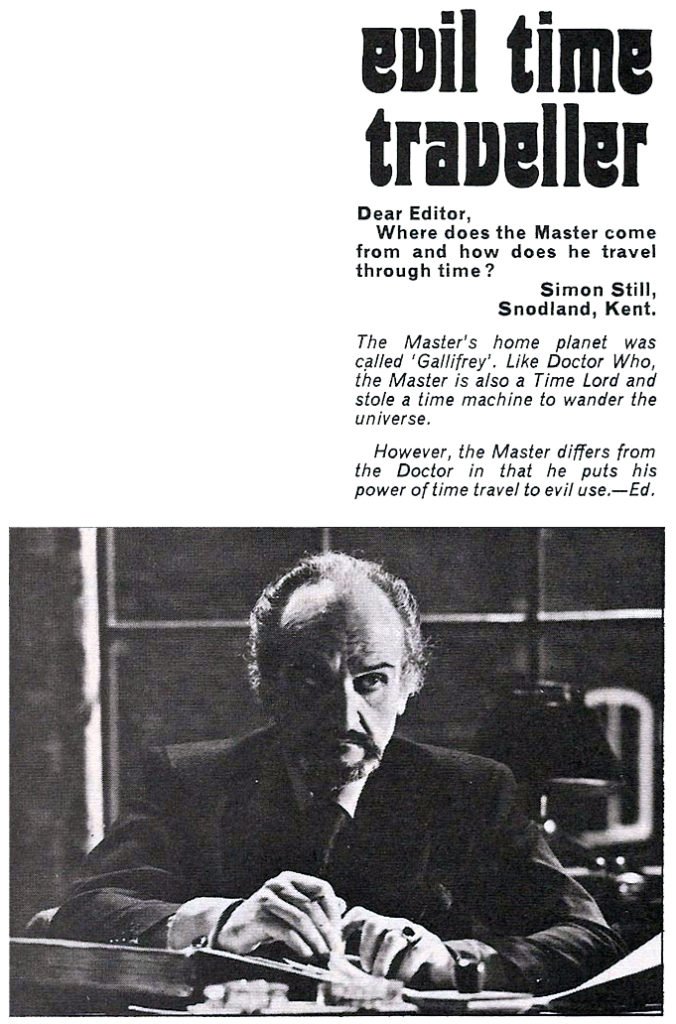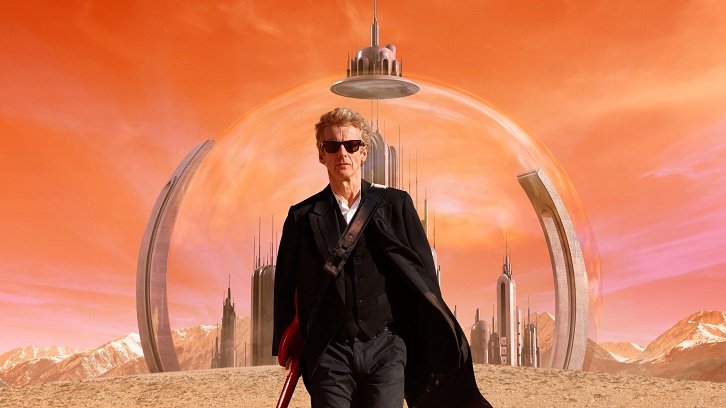Good question, and no, the answer is not ‘in the hearts and minds of all the children of the world’ because that’s very silly…although perhaps not as silly as trying to locate the precise location of a fictional planet…cough…
According to the Discontinuity Guide, which leans heavily on the imprecise art of taking what’s said as gospel, the first mention of where the Time Lords call home comes during the events of Marco Polo, where Susan tells Ping Cho that her home is ‘as far as a night star’, which, if taken literally, means that it’s in Earth’s galaxy.
Later on during Mission to the Unknown, we learn that the star of the home-not-called-Gallifrey-just-yet is actually located in the constellation known as Kasterborous (other websites are available). The galactic core is in Sagittarius, so perhaps Kasterborous occupies the same area in Earth’s sky in the future.
In fact, winding back a second, Gallifrey wasn’t Gallifrey until The Time Warrior – and even then, the script refers to it as ‘Galifrey’. However, the word itself first appeared in TV Action #126, which was released in July 1973. In the letters column, the editors responded to a question from Simon Still of Kent who asked where the Master came from. The answer give was that ‘The Master’s home planet was called ‘Gallifrey’.
Before we bestow upon TV Action #126 the naming rights, it’s more likely that since shooting on The Time Warrior wrapped on 12 June 1973, and the scripts had been completed earlier that spring, the likelihood that TV Action were given the name by the Doctor Who production office.

If we were to divide the time between where we knew relatively little about the location of the Doctor’s home planet and a period where we could start to imagine its location within the fictional world of Doctor Who, Season 13 would be the dividing line.
The Time Lord in Terror of the Autons says he has travelled 29,000 light years, which is about the distance from Earth to the centre of the Milky Way. Assuming he’s come straight to Earth and not stopped off at an intergalactic Burger King, this would indicate that Gallifrey is at the galactic core, or very far out on the edge, or above the plane of the galaxy. The latter, the Discontinuity Guide concurs, seems to be the most likely answer.
Years later, during the events of the 1996 TV Movie, the Eighth Doctor tells Grace and Chang Lee that Gallifrey was “on the other side of your galaxy” and “250 million light-years away” from Earth, so it might have shifted a bit since the Zygons first bothered us.
Perhaps it’s because we’re entering a period where fans are starting to write for the show or that the production office wants to explore the Doctor’s past and, in mining this rich, fertile land, they start to favour their own interpretation, and lo, canon is born.
Either way, we learn in Pyramids of Mars that Gallifrey is said to have the binary coordinates of 10-0-11-00:02 from Galactic Zero Centre (in Gallifreyan notation only the first part is binary). Gallifrey is a few billion million miles away from Karn, putting it in the same solar system, with at least three other planets (The Brain of Morbius), possibly four (The Deadly Assassin). Skipping ahead, The Invasion of Time refers to five planets in the solar system although it does not name them. If you feel so inclined, you could add the asteroid known as Kasterborous the Fibster from Lungbarrow to that list too.
So if Gallifrey is in the Milky Way then ‘Mutter’s Spiral’, the term first uttered in The Deadly Assassin, is the Time Lord designation for our own solar system (although K-9 Mark II does refer to it as both the Milky Way and Mutter’s Spiral in Shada) or a reference to the galaxy’s spiral arms (they being at the core). To get all Bidmead for a second, Mutter’s Spiral is divided into four quadrants. In the third quadrant there were at least 8,023 sectors, with Sector 8023 containing Earth.
However, Mutter’s Spiral isn’t the only term used by another species to describe our corner of the universe. Adric referred to it, Galaxia Kyklos in Four to Doomsday and by the time of Sabalom Glitz in The Mysterious Planet, it also went by the name of the Stellian Galaxy, a term that also pops up in The Trial of a Time Lord.

After the events of The Last Great Time War, wherein Gallifrey was removed from the time lock and relocated near Earth with potentially terminal consequences for our home planet, only for the Tenth Doctor to fire it back again with a deadshot into a diamond, Missy gave the Twelfth Doctor the original coordinates to Gallifrey where, well, it wasn’t there…
It had, as it turned out, been cast out to the very end of the universe, or as The General says in Hell Bent ‘the end of the universe, give or take a star system.’
So there you have it, if anyone pulls alongside you and asks for directions to Gallifrey, you can confidently say it’s currently at the end of everything…or near enough…
